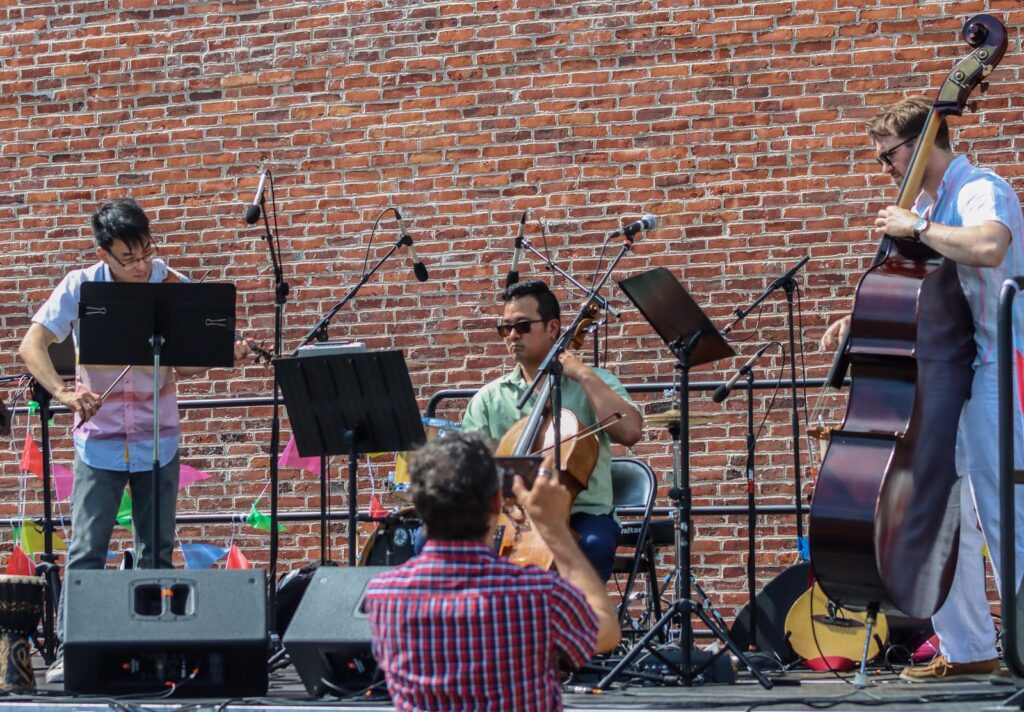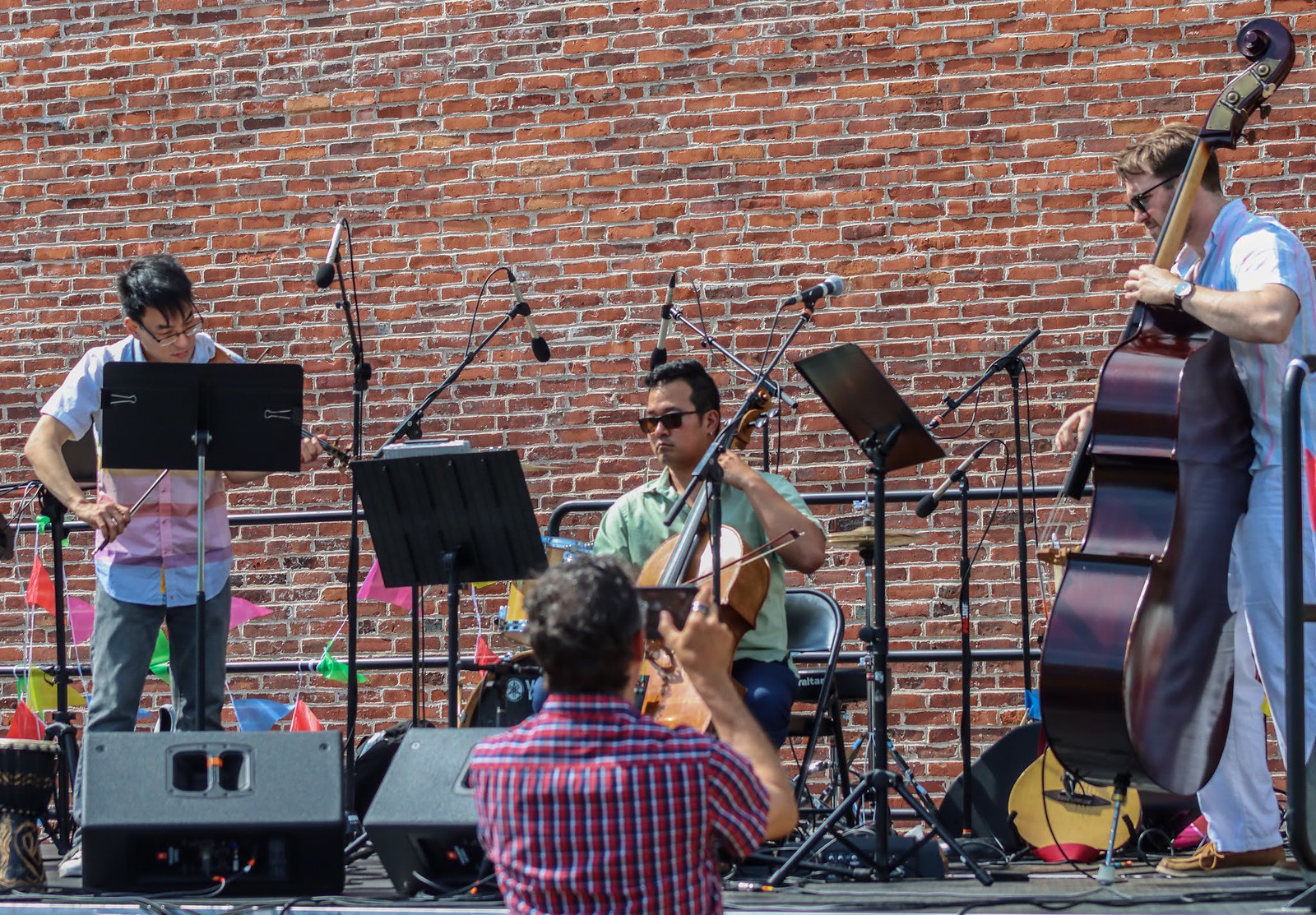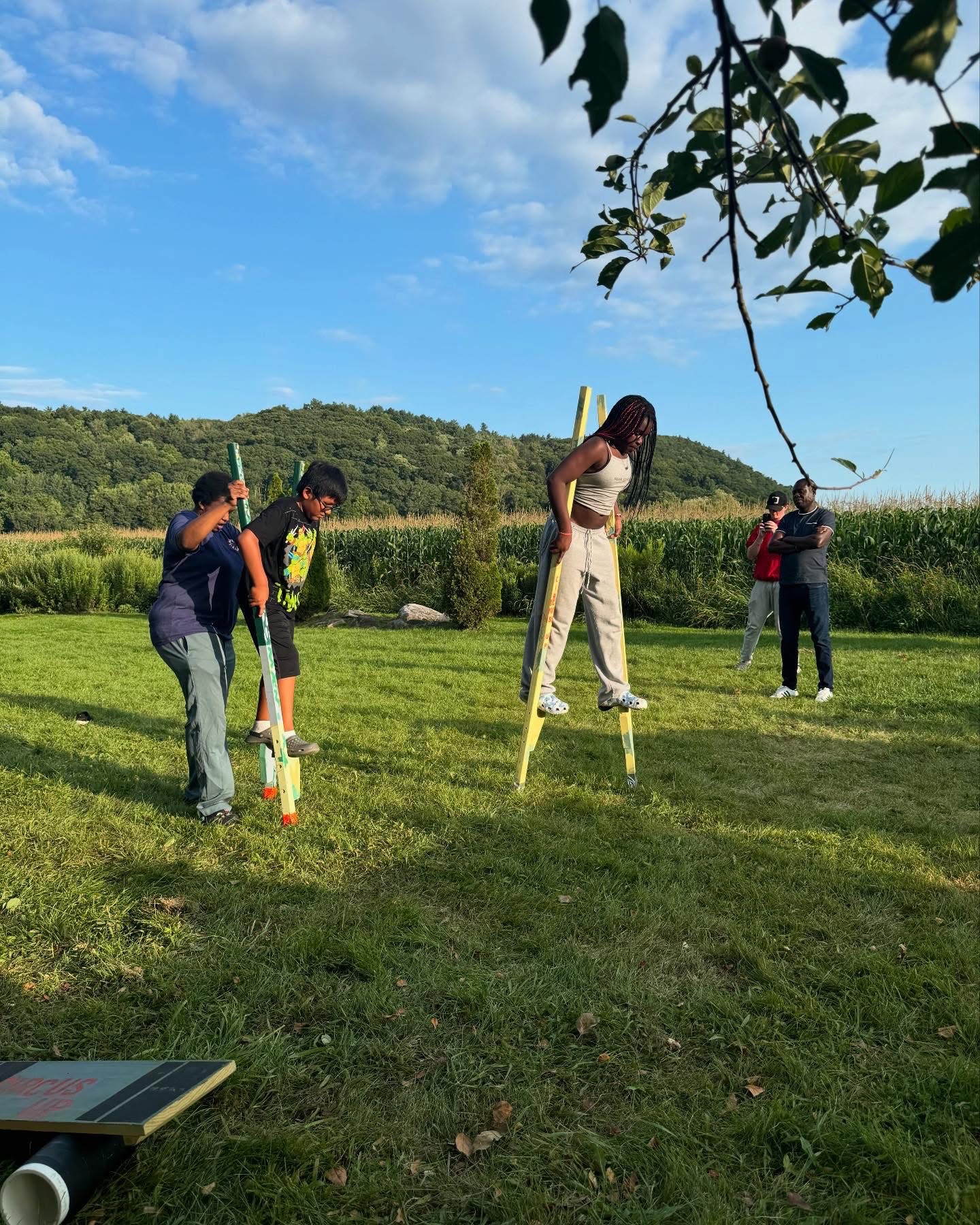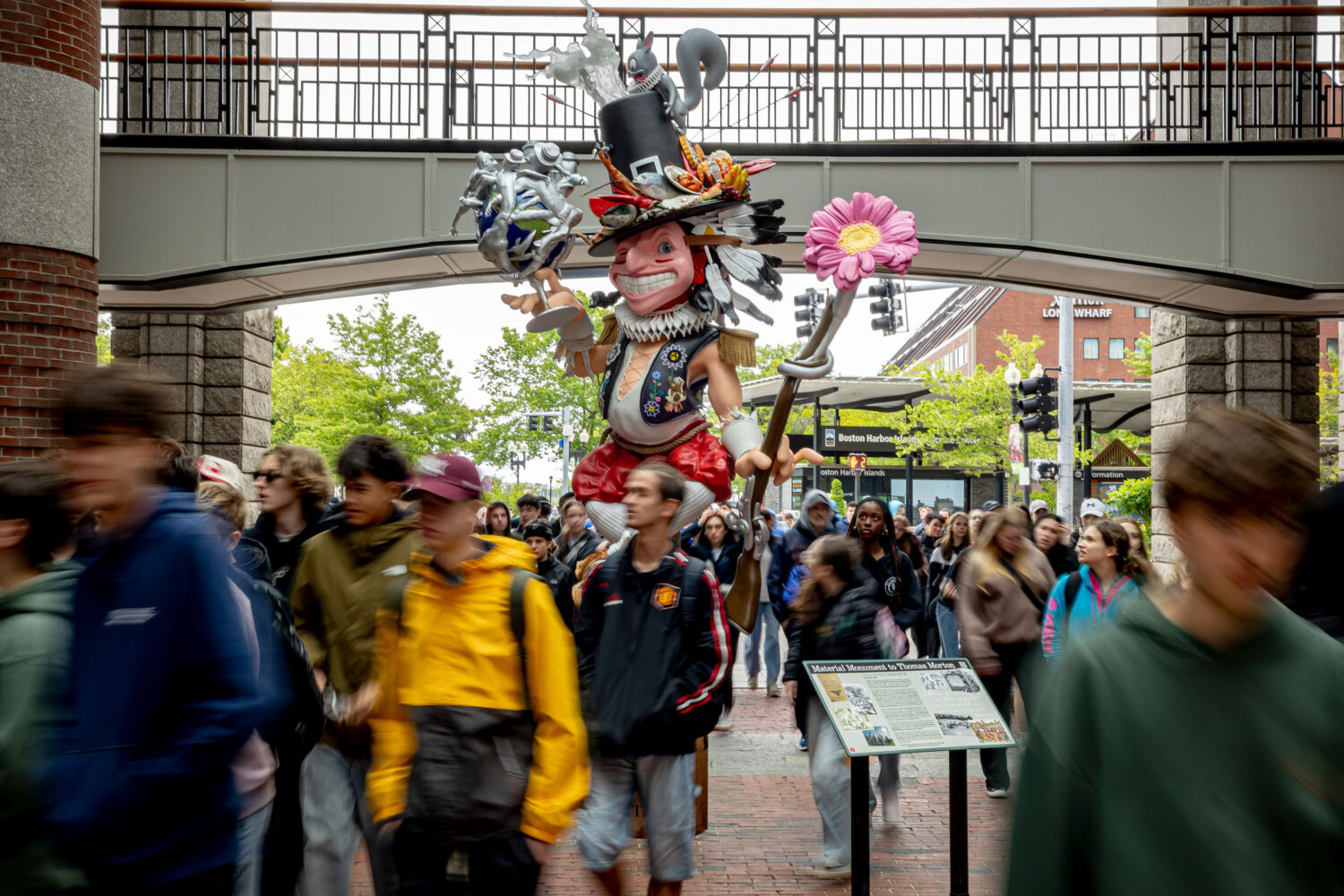The New Bedford Symphony Orchestra offers a case study on how one arts organization is growing a new, diverse audience for classical music.
Decades ago, in the historic whaling port of New Bedford, “going to the symphony” meant buying tickets to sit in red velvet comfort under a Czechoslovakian glass chandelier.
The Zeiterion Performing Arts Center was a beautiful setting to be sure, but over time, the New Bedford Symphony Orchestra noticed that its concert hall audiences were not reflecting the demographic changes taking place in the city itself. In New Bedford, nearly 40 percent of the population identifies as something other than white. The average age of residents is just 37. The NBSO audience, on the other hand, was older and mostly white.
So, the orchestra did something radical. Instead of sitting back and waiting for new patrons to find their way to the concert hall, NBSO brought the concert hall to new patrons.
Now “going to the symphony” means much more than taking a seat in an elegant theatre. In 2022, the NBSO performed in such diverse settings as a downtown gift shop, a local brewery, a co-working space, and a “Buy Black” Juneteenth Celebration. Over the past several years, it has played popup concerts on the steps of the New Bedford library, at schools, churches, parks, museums, community festivals, senior events, and at the New Bedford Housing Authority. Between January and August 2022, in fact, the orchestra performed more than 40 such concerts. “We’re on a journey to try to figure out just how much impact we can have, how many different, meaningful and fun ways we can bring this music into people’s lives,” says David Prentiss, NBSO President and CEO. “We’re always trying to think outside the box, to go beyond the typical mindset of a symphony orchestra and classical music and to find new frontiers.”
The NBSO has spent more than two decades thinking beyond the tight confines of the concert hall box, keeping racial equity in mind along the way. Since 2008, after Prentiss took over, the orchestra has quintupled the number of concerts it plays by strategically planning performances in wildly divergent venues — anywhere there’s an opportunity to cultivate new classical music listeners of every age, race, and class.
“It’s not that we’re waiting for somebody to invite us,” says Terry Wolkowicz, director of education at the NBSO. “Now, the idea is how can we be creative about finding ways to really put our music out into the communities that we serve.”
The strategy has resulted in a number of creative performances in creative places. In 2022, the orchestra held its second “Symphony on Tap” event designed to prick the ears of young adults. The full orchestra of more than 60 musicians performed a 60-minute concert in a New Bedford mill building overlooking Buzzards Bay. Concertgoers sipped cocktails and nibbled on appetizers around high-top tables reminiscent of a nightclub. The first version of the event held in 2019 attracted 400 people, of which half were newcomers. About 80 of these new patrons ultimately ended up attending subsequent NBSO concerts at the performance center.
“We’ve done that twice, and that’s been phenomenal,” says Prentiss. “We’ve attracted a lot of people in their 20s and 30s.” Because New Bedford has a large Cape Verdean population, the orchestra partnered with the Cape Verdean Association in New Bedford, Inc. in an event called “Junta Mon: Together in Music.” At that performance, a Cape Verdean band played one set of melodies, followed by a set performed by a NBSO trio. After both sets were finished, musicians from both groups converged in a joyful jam session.

Similarly, the orchestra also invented a program it calls “Classical Community” in which it offers free tickets to families with children. According to Prentiss, that program attracts an average of 60 to 80 listeners each concert. With the orchestra playing seven concerts a year, Prentiss estimates that the program has helped pull in several hundred younger patrons.
“The pot of gold at the end is really how many people will make classical music part of their lives,” says Prentiss. “We love classical music. What we’d love is for at least some of these kids and their families to become lifelong classical music fans.”
Using its pop-up model, the orchestra has been able to reach a broader and much more diverse audience in line with the racial equity principles that are part of its strategic plan, but in a cost-effective way. A small pop-up concert featuring a duo or trio can be put on for under $1000. In contrast, a full concert featuring the orchestra’s 75 musicians might cost $85,000. The smaller concerts also allow the orchestra to tailor programming to audiences, mixing it up by playing a little Mozart, maybe a Disney tune, and even taking requests from the kids.
“There’s a lot more intimacy and personalization that happens because it’s a smaller, much more flexible type of atmosphere that you’re in.” says Prentiss.
Linking community engagement and education
Another important NBSO innovation has been to build an extensive educational program for children. As opposed to orchestras who put on a once-a-year concert aimed at kids, the NBSO has taken a more comprehensive approach partnering with 58 schools in Massachusetts and Rhode Island for the full school year.
These concepts have included lessons on ecosystems, gravity, and the rhythmic gaits of quadruped animals.
“What we know in cognitive psychology, is that the more of a contrasting context you present to students around the same shared concept, the more they begin to form an abstraction that they can then transfer to a new and novel context,” says Wolkowicz, who graduated from the New England Conservatory of Music before earning her master’s degree in education at Harvard.
This year, Wolkowicz has developed a curriculum around symmetry which has been taught in more than 200 classroom visits in Massachusetts schools. Students contemplate symmetry in music before exploring the idea in other contexts, including the artwork of M.C. Escher, geometry, nature, and architecture. The NBSO educational programs fill a gap resulting from significant cuts made in the New Bedford Public Schools arts and music programs in the early 2000s.
“In response, the NBSO decided to commit to expanding its educational programs to fill the gap,” says Prentiss.
But learning doesn’t stop in the classroom. The orchestra has found a formula for melding its educational goals with community outreach. Last August, the NBSO threw a party in partnership with the Alfred J. Gomes School in New Bedford during a school open house. On the school playground, a Symphony violinist and cellist played for elementary school age children and their parents. There was face painting, food, and musical games. Amidst the festivities, the NBSO used its Bird Flight Patterns and Music program, created for the school year 2020-21, as a clever way to introduce kids to the notion of melodic rhythm and pattern in music. Children could flap their arms to the beat of music and were sent home with coloring books containing bird images with a QR code on each page launching a YouTube video performance of the NBSO performing music with melodic patterns correlating to each illustrated bird’s flight.
“The kids loved it,” says Ellyn Gallant, principal at the Gomes School. “There was a lot of smiles, a lot of laughter and a lot of engagement. It was the most well-attended open house that we’ve ever had.”
In seamless continuity, the NBSO plans to invite the 200 families attending the Gomes open house into the concert hall later in the fall for a musical scavenger hunt and performance in which children will be invited on stage to play percussion instruments with NBSO musicians. “There’s no way that we can anticipate how many might attend,” says Wolkowicz. “This is all new territory for us. So, we just try to do the best we can. And then we reflect back to say, okay, how was that? What do we change?”
While the orchestra continually reviews programs based on what seems to work, it’s also thinking about its commitment to racial equity by working on attracting more musicians of color (the orchestra still has few). It’s been working with the Sphinx Organization dedicated to assisting Black and Latinx classical musicians, in its effort. It’s also working on diversifying its performance offerings.
Yaniv Dinur, the NBSO musical director, says the orchestra is actively focused on performing more works written by women and musicians of color. With this goal in mind, the NBSO collaborated with the New Bedford Historical Society in March 2021 to perform a concert featuring all Black composers. It had special resonance in New Bedford, an important stop on the Underground Railroad.
“After we did it, I told Dave that I think this was one of the most meaningful concerts that I had ever conducted,” says Dinur. “The music that I discovered was just gorgeous. The whole concept was meaningful because it was related to our own town, our own city. And we told the story of the of the people who lived there. And it had so many layers because of that.”
One of the most exciting NBSO initiatives has been around creating a “BIPOC database” of composers and musicians for music teachers to reference. Teachers can enter in a keyword for a musical concept they would like to teach, such as “ostinato” or “staccato.” The keyword will link to a YouTube video featuring examples of the principle written by a BIPOC composer. In this way, teachers and students can be exposed to the rich diversity of classical music out there. By the time it is finished, Wolkowicz hopes the database will include the names of 1000 musicians of color.
It’s initiatives like these, and the full range breadth and depth of programs at NBSO, that have struck a chord in the community. “The goal,” says Prentiss, “is to be ubiquitous.”



